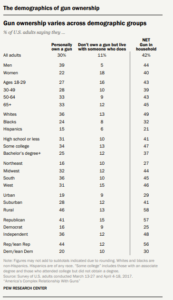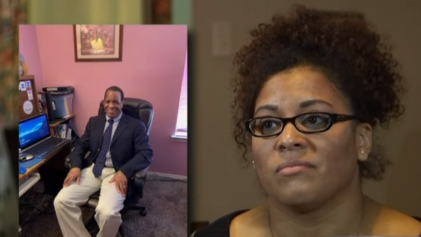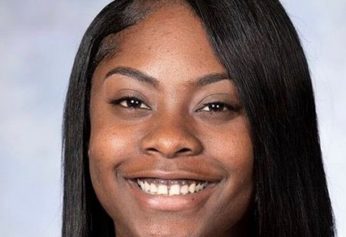What is the profile of the typical gun owner in America? The short answer is that a relatively small number of uneducated white men beset by racial fears and anxiety are stockpiling most of the guns. This, according to a report from the Injury Control Research Center at the Harvard T.H. Chan School of Public Health.
The report — “The Stock and Flow of U.S. Firearms: Results from the 2015 National Firearms Survey” — provides a useful and revealing assessment of who predominantly owns guns and why they have them. The country’s civilian gun stock increased from about 192 million (including 65 million handguns and 127 million long guns) to 265 million (of which 113 million are handguns) since the mid-1990s. This represents an increase of 73 million firearms. Sixty-two percent of handguns are semiautomatic pistols, and 29 percent are revolvers, while 62 percent of long guns are rifles and 38 percent are shotguns.
As of 2015, gun ownership was concentrated, with gun owners owning more weapons, according to the Harvard study. While the median owner owned two weapons, those 8 percent of owners who possessed at least ten firearms accounted for 39 percent of the total civilian stock. Further, 14 percent of gun owners — 3 percent of the adult population — owned half of the guns in the U.S., totaling 130 million firearms. Considering that there are 650 million civilian firearms around the world, this means 3 percent of American adults own 20 percent of the world’s guns. Meanwhile, the remaining 86 percent of gun owners owned the other half of the country’s stock. Between 2011 and 2015, approximately 70 million guns changed hands, mostly through purchases, while 2.5 percent of Americans had their guns stolen in the previous five years, amounting to half a million firearms annually.
Looking at demographic profiles and the types of guns that people own, the Harvard study shows that not all firearms owners are the same. For example, a divergence emerges between those people who solely own handguns or long guns, as opposed to those who have both. Those who own handguns only tend to be nonwhite and women in urban areas who likely did not grow up with a gun in the house. Women account for only 20 percent of long gun owners and 13 percent of people who solely own long guns, but 43 percent of exclusive handguns owners, and 14 percent of people who own both types.
Nearly two-thirds of gun owners reported that protection against other people was one of the main reasons they bought a firearm, and three-quarters of owners said they owned one primarily for protection. The other reasons respondents cited were hunting (40 percent), collecting (34 percent), sporting use (28 percent), protection against animals (20 percent), and other reasons (40 percent). Further, while most people with handguns want protection from strangers, this is the case for only 31 percent of people who solely own long guns, just as over half of long gun owners cite hunting as their primary reason for owning a gun. Women and people in the South are more likely than men to own for protection, a reason less common for older people.

Gun culture and stockpiling of weapons in America is tied to white male fear, insecurity and privilege, according to an Atlantic article titled, ‘White Male Privilege’ and Other Themes of Gun Culture. Researchers at Baylor University found that white male gun owners who have lost or fear losing their economic status have an emotional and moral attachment to their guns. They also more likely to justify violence against the U.S. government. Guns provide a restorative quality and become a sacred object to these white men in economic distress, giving them a sense of power and control, while gun control poses a threat to their masculinity. According to the Baylor study, while church attendance and political conservative ideology predicted gun empowerment, religiosity could offset the need to seek meaning through gun ownership. The rise in white supremacist groups in recent years reflects a sense of purpose and identity at the expense of others, resulting in racial violence. The film “Bowling For Columbine” articulated the history of white fear and guns in the U.S.:
Although firearm sales have fallen since Trump was elected, the Obama years were a boon for the gun manufacturers, as the industry grew 158 percent, and Americans bought $29.1 billion in firearms and $16.6 billion in ammunition during the president’s two terms in office. This was fueled in part by the 44th president’s desire to enact gun control measures. In addition, the NRA created an atmosphere of hysteria by warning gun owners that Obama posed a danger to their Second Amendment rights and would take away their guns. In November 2008 following the Obama victory, some whites said they were preparing to protect themselves in case of a race war, afraid the election would empower people of color to threaten white families and their property. Consider that while in 2007 the U.S. manufactured 3.9 million firearms, in 2013 that number had risen to 10.8 million guns, according to the Bureau of Alcohol, Tobacco and Firearms
It is also worth noting, in light of this white gun culture and the role of guns in their live, that 77 percent of gun deaths among whites are suicides. White men are most likely to stockpile guns and most likely to take their own lives with them.


